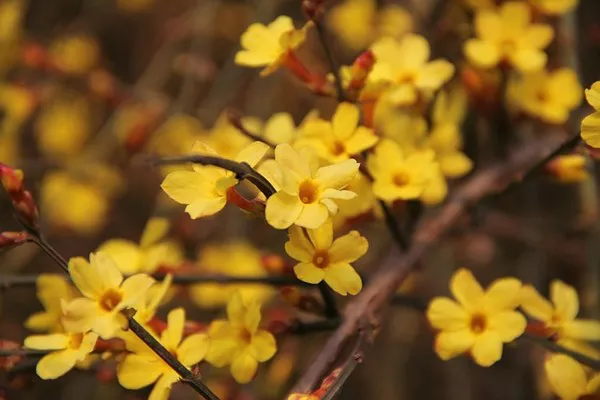Yellow flowers hold a special place in the world of flora for their cheerful and vibrant appearance. They brighten up gardens, fields, and landscapes with their sunny hues, evoking feelings of happiness and positivity. Yet, not all yellow blooms are cherished garden gems; some are dismissed as mere weeds. In this article, we delve into the fascinating world of the yellow flower weed to uncover its true identity, exploring the various species that fall under this category and the ecological significance they hold.
Defining the Yellow Flower Weed
Before we explore the specifics, it’s essential to understand what is meant by the term “yellow flower weed.” In a botanical context, the word “weed” does not inherently imply negativity. Weeds are simply plants growing where they are not wanted, and they may have various impacts on their surroundings. In the case of yellow-flowering weeds, they are often wild or native plants that display bright yellow blossoms and are known to thrive in a variety of environments. These plants can be found in gardens, lawns, fields, roadsides, and even urban areas, where they often flourish without intentional cultivation.
Common Species of Yellow Flower Weeds
Several species of yellow flower weeds are prevalent in different regions around the world. While it is impossible to cover them all in this article, we will explore a few of the most common ones.
Dandelion (Taraxacum officinale): Dandelions are perhaps the most recognizable yellow flower weeds. They are widespread in lawns, fields, and gardens, displaying bright yellow composite flowers. Despite their reputation as pests, dandelions have medicinal and culinary uses and serve as valuable sources of nectar for pollinators.
Creeping Buttercup (Ranunculus repens): Creeping buttercup is notorious for spreading quickly and vigorously through lawns and pastures. Its yellow flowers have a glossy appearance, and the plant can be invasive, particularly in moist areas.
Common Ragwort (Senecio jacobaea): Common ragwort is a tall plant with clusters of bright yellow flowers. It often grows in waste areas and roadsides. However, it contains toxic alkaloids that are harmful to livestock, making its presence a concern in some regions.
Yellow Hawkweed (Hieracium pratense): Yellow hawkweed is characterized by its daisy-like yellow flowers. It can be invasive and competes with native plants in grasslands and meadows.
Bird’s-Foot Trefoil (Lotus corniculatus): Bird’s-foot trefoil is a low-growing plant with clover-like leaves and yellow pea-like flowers. It is common in pastures and meadows and provides food for grazing livestock and pollinators.
The Ecological Significance of Yellow Flower Weeds
While many gardeners and landowners consider yellow flower weeds a nuisance, these plants have important ecological roles and can offer numerous benefits to their ecosystems.
Pollinator Attraction: Yellow flowers are often rich sources of nectar, attracting a wide variety of pollinators, including bees, butterflies, and hoverflies. They contribute to the overall health of local ecosystems by supporting these essential creatures.
Soil Improvement: Some yellow flower weeds, like dandelions, have deep taproots that help break up compacted soil, allowing for better water infiltration and nutrient absorption by other plants. They also aid in preventing soil erosion.
Biodiversity: Weedy areas often provide habitats for a diverse range of insects and small animals. The presence of these plants can increase biodiversity in urban and suburban landscapes.
Early Blooming: Yellow flower weeds often bloom early in the season, providing a crucial source of food for pollinators when other flowers may not be available. This early bloom can be essential for the survival of these vital species.
Controlling Yellow Flower Weeds
Although yellow flower weeds have ecological significance, they can become invasive and detrimental to gardens and cultivated fields. Thus, it’s essential to find a balance between appreciating their ecological roles and managing their growth. Here are some strategies for controlling yellow flower weeds:
Manual Removal: Hand-pulling or digging out yellow flower weeds is an effective way to control their spread in gardens and lawns. It’s important to remove the entire root to prevent regrowth.
Mowing and Trimming: Frequent mowing or trimming can help keep yellow flower weeds at bay in lawns and grassy areas. However, this may not completely eliminate them, as some species can tolerate regular mowing.
Herbicides: In cases of severe infestations, selective herbicides can be used to control yellow flower weeds while sparing desirable plants. Always follow the manufacturer’s instructions and use herbicides responsibly.
Promoting Native Plants: Incorporating native plants in gardens and landscapes can help reduce the establishment of yellow flower weeds. Native plants are better adapted to local conditions and often outcompete non-native weeds.
Encourage Pollinators: If you have a patch of yellow flower weeds in your garden that isn’t causing harm, consider leaving it as a dedicated space for pollinators. This can benefit local wildlife and support a healthy ecosystem.
Conclusion
Yellow flower weeds, often dismissed as pests, play essential roles in our natural world. Their sunny blossoms not only provide a source of nectar for pollinators but also contribute to soil health and biodiversity. It is crucial to strike a balance between appreciating their ecological significance and managing their growth where necessary.
Ultimately, our perception of these yellow flower weeds can change when we consider their place in the broader ecosystem. So, the next time you spot a patch of dandelions or creeping buttercups, take a moment to appreciate the beauty and purpose they bring to the natural world, even if they are not always welcome in our well-manicured gardens and lawns.


